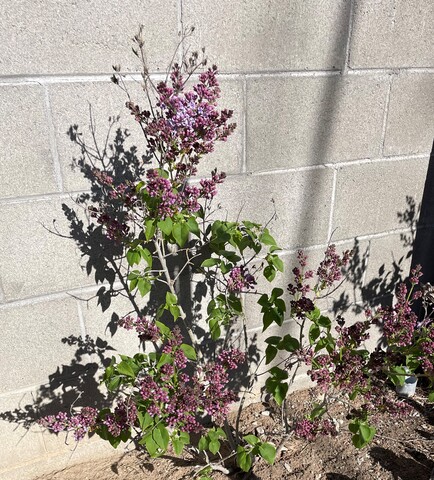
By the last week in April, the weather finally warmed enough here in the northwest corner of New Mexico that there was little chance of frost. So a couple of days ago, I planted my garden space in a corner of my back yard. It's big enough for a variety of vegetables but not so big that it's too hard to weed.
I love spending time in the garden, because I am so focused on digging a space for each starter plant or seed that I don't think about anything else. After I dig a hole, I add a little soil enhancer and some water. Then I carefully plant the vegetable or seed and cover it up before adding more water.
I have tomatoes, sweet red peppers, sweet peas, green beans, basil, cilantro, cucumbers, curly kale, romaine lettuce, a green lettuce whose name I can't remember, butternut squash, and cantaloupe growing in my garden. I have also planted some marigolds, because they help to repel squash bugs. I will add russet potatoes in about a week.
There will be weeding, watering, and waiting for the plants to mature so I can savor their taste. I look forward to the wonderful tossed salads I can make with vegetables from my own little garden. I can hardly wait to sample the butternut squash and cantaloupe! When the sweet peas and green beans are ready to pick, I sometimes pop them in my mouth and relish their delightful taste.
A lilac bush in the corner of the garden added color to my garden planting efforts. Its purple blossoms had just opened. Lilacs are beautiful for such a short time that I felt fortunate to have their fragrant scent surround me. It helped to make the gardening experience even more enjoyable.
While I was planting my garden, I also had time to notice the two spruce trees in my yard and the elm tree in my neighbor's yard. New leaves are sprouting on the elm, and lots of pine cones have fallen around the spruce trees. I don't take as much time to notice those trees when I'm not working in my garden.
If you get a chance to plant your own garden this spring, I hope you have a wonderful time doing it. There is something invigorating about being outside and working with the soil. And there is the anticipation of watching your garden grow until the delicious vegetables are big enough to pick and eat!
